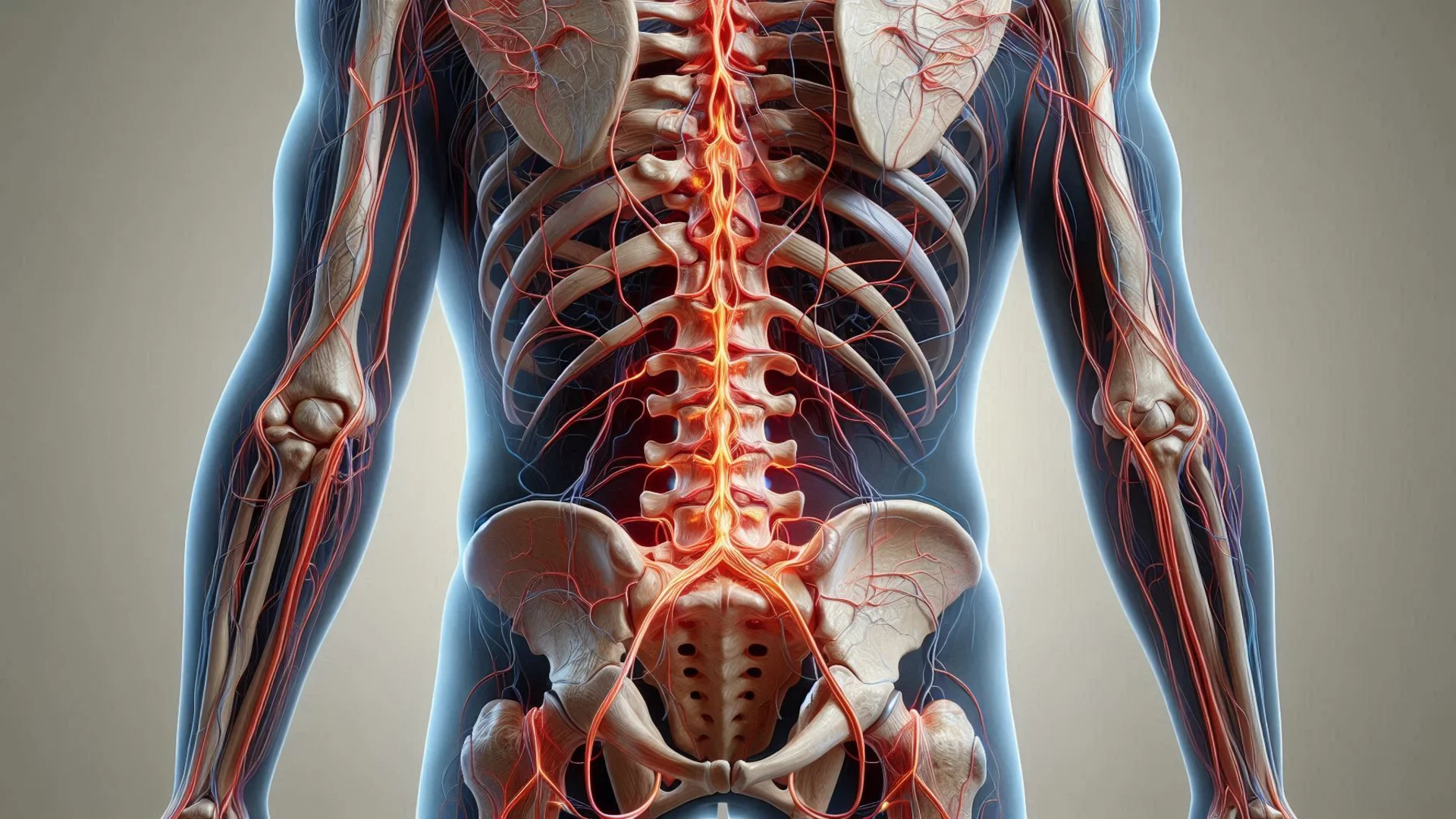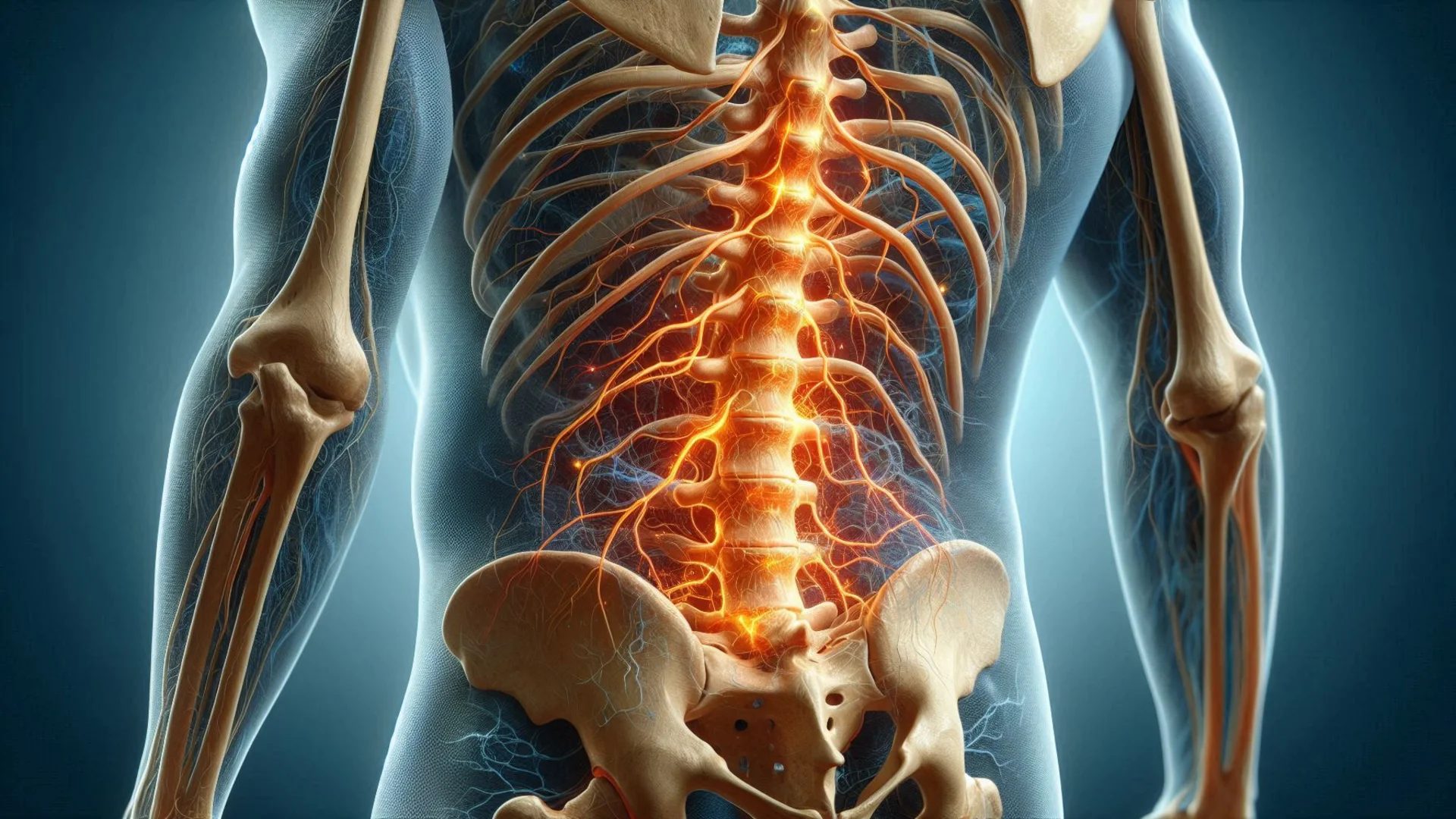Key Highlights
- Spinal decompression therapy is a non-surgical option that can provide relief from sciatica and lower back pain.
- It works by relieving pressure on the sciatic nerve and promoting the healing process in the spinal discs.
- Spinal decompression therapy is effective in reducing pain, improving range of motion, and enhancing quality of life.
- It is a non-invasive treatment option that offers customized treatment plans and minimal downtime.
- Clinical studies and patient success stories support the effectiveness of spinal decompression therapy for sciatica relief.
- Individuals with sciatica and spinal issues should consider spinal decompression therapy as a viable treatment option.
Understanding Sciatica and Its Causes
Sciatica is a condition that arises when the sciatic nerve, which runs from the lower back down the legs, becomes compressed or irritated. This compression can be due to various factors, such as herniated discs, spinal stenosis, degenerative disc disease, or bone spurs. The resulting pain can range from a mild ache to excruciating discomfort, often affecting one side of the body. Understanding the causes of sciatica is crucial to finding the right treatment approach for effective relief.
What is Sciatica?
Sciatica is a condition characterized by pain that radiates along the sciatic nerve, which is the longest nerve in the body. The sciatic nerve originates in the lower back and extends down the buttocks, thighs, and legs. When the sciatic nerve is compressed or irritated, it can cause discomfort, numbness, tingling, or shooting pain that radiates from the lower back to the leg. Sciatica is often caused by herniated discs, spinal stenosis, degenerative disc disease, or bone spurs. Understanding the symptoms and causes of sciatica is essential for proper diagnosis and treatment.
Common Causes of Sciatica
The most common causes of sciatica include:
- Herniated discs: When the gel-like material within the spinal discs protrudes and presses on the sciatic nerve.
- Spinal stenosis: When the spinal canal narrows and compresses the sciatic nerve.
- Degenerative disc disease: When the spinal discs degenerate and lose their cushioning ability, causing nerve compression.
- Bone spurs: Abnormal bony growths that can develop on the vertebrae and compress the sciatic nerve. These conditions can occur due to aging, arthritis, or injury to the spine. Identifying the underlying cause of sciatica is crucial for effective treatment and long-term relief.
The Basics of Spinal Decompression Therapy
Spinal decompression therapy, also known as lumbar decompression table therapy, is a non-invasive treatment option for relieving pressure on the spinal discs and nerves. It involves the use of a specialized table that gently stretches the spine and creates negative pressure within the spinal discs. This therapy aims to promote the repositioning of herniated or bulging discs, alleviate nerve compression, and encourage the healing process. Spinal decompression therapy can be an effective treatment option for individuals experiencing sciatica and lower back pain.
How Spinal Decompression Works
Spinal decompression therapy works by creating negative pressure within the spinal discs, which helps to relieve pressure on the nerves and promote the healing process. During the therapy session, the patient lies on a specialized table and is usually harnessed in for stability. The table’s computer-controlled mechanism then applies a gentle traction force to the spine. This controlled stretching and relaxation cycle creates a vacuum effect within the spinal discs, allowing for the repositioning of herniated or bulging discs. The negative pressure created also enhances nutrient and oxygen flow to the discs, supporting the body’s natural healing processes.
Types of Spinal Decompression Therapy
There are different types of spinal decompression therapy available, including:
- Traction therapy: Involves the use of a specialized table that applies controlled traction force to the spine, creating a stretch and decompression effect.
- Manual therapy: Involves the hands-on manipulation of the spine by a trained therapist to relieve pressure on the spinal discs and nerves.
- Type of traction therapy: Different devices and machines may be used to apply traction force to the spine, such as motorized traction tables or spinal decompression machines.
- Treatment plan: Spinal decompression therapy is typically done in a series of treatments, tailored to the individual’s condition and response to treatment. The treatment plan may involve multiple sessions over a period of several weeks, with adjustments made based on progress and symptoms.
The Effectiveness of Spinal Decompression for Sciatica Relief
Spinal decompression therapy has shown effectiveness in providing relief from sciatica symptoms. Clinical studies have demonstrated positive outcomes in terms of pain reduction, improved range of motion, and patient satisfaction. Patient success stories also highlight the effectiveness of spinal decompression therapy in alleviating chronic pain, improving nerve function, and enhancing daily activities. The non-invasive nature of spinal decompression therapy and its ability to target the underlying causes of sciatica make it a valuable treatment option for individuals seeking long-term relief.
Clinical Studies and Results
Several clinical studies have investigated the effectiveness of spinal decompression therapy for sciatica relief. These studies have shown positive outcomes, including significant pain reduction, improved range of motion, and enhanced quality of life. Patient success stories also support the effectiveness of spinal decompression therapy in alleviating chronic pain and improving daily activities. The results of these studies and patient experiences demonstrate the potential benefits of spinal decompression therapy as a non-invasive treatment option for sciatica and lower back pain.
Patient Success Stories
Many patients who have undergone spinal decompression therapy for sciatica and lower back pain have reported significant improvement in their symptoms and quality of life. These success stories often involve individuals who had been struggling with chronic pain and limited mobility due to sciatica. After a series of spinal decompression therapy sessions, patients have reported reduced pain, improved nerve function, and enhanced ability to perform daily activities. These positive outcomes highlight the potential of spinal decompression therapy in providing long-term relief and improving the overall well-being of individuals with sciatica.

Who Should Consider Spinal Decompression for Sciatica
Individuals who are experiencing sciatica and lower back pain should consider spinal decompression therapy as a treatment option. It is particularly beneficial for those who have not found relief from other conservative treatments or want to avoid surgical interventions. However, it is important to evaluate the suitability of spinal decompression therapy based on individual health conditions and spinal issues. Consulting with a healthcare professional, such as a physiotherapist or chiropractor, can help determine whether spinal decompression therapy is a suitable treatment option.
Evaluating Your Suitability for the Therapy
Before considering spinal decompression therapy for sciatica relief, it is essential to evaluate your suitability for the therapy. This evaluation involves considering your overall health conditions, such as the presence of certain medical conditions or contraindications. It is also important to assess the specific spinal issues causing your sciatica symptoms and determine whether spinal decompression therapy is an appropriate treatment option. Consulting with a healthcare professional, such as a physiotherapist or chiropractor, will help assess your suitability for spinal decompression therapy and guide you towards the most effective treatment approach for your individual condition.
Risks and Contraindications
While spinal decompression therapy is generally considered safe and well-tolerated, there are some risks and contraindications to be aware of. Risks may include temporary muscle soreness, mild discomfort during treatment, or aggravation of existing symptoms. Contraindications for spinal decompression therapy may include certain health conditions or spinal issues that can be worsened by the therapy. For example, individuals with unstable spine fractures, spinal tumors, or severe osteoporosis may not be suitable candidates for spinal decompression therapy. It is important to discuss any potential risks or contraindications with a healthcare professional before undergoing treatment.
What to Expect During Spinal Decompression Treatment
During a spinal decompression treatment session, the patient typically lies on a specialized table and may be harnessed in for stability. The table’s computer-controlled mechanism then applies a gentle traction force to the spine, creating a stretch and decompression effect. The treatment session usually lasts about 15 to 30 minutes, and the total number of sessions recommended can vary based on the individual’s condition and response to treatment. It is important to follow the treatment plan provided by the healthcare professional to optimize the effectiveness of spinal decompression therapy.
The Procedure Explained
During a spinal decompression treatment session, the patient lies on a specialized table that allows for controlled traction and decompression of the spine. The position of the spine is carefully adjusted to target the affected area and relieve pressure on the spinal discs and nerves. The treatment involves a series of sessions, with each session lasting about 15 to 30 minutes. The total number of sessions recommended can vary depending on the individual’s condition and response to treatment. Following the treatment plan provided by the healthcare professional is crucial for achieving optimal results with spinal decompression therapy.
Duration and Frequency of Treatments
Spinal decompression therapy typically consists of a series of treatments to achieve optimal results. The duration and frequency of treatments can vary depending on the individual’s condition and response to therapy. A typical treatment session lasts between 15 to 30 minutes. Most patients require 10 to 12 sessions over a period of 6 weeks to experience significant improvement.
The treatment plan is usually tailored to the patient’s specific needs. The therapist can adjust the parameters of the therapy, such as traction force and duration, based on the individual’s condition and response to treatment. Regular sessions are usually recommended, with an interval of 2 sessions per week. This allows for adequate recovery time and ensures the therapy remains effective.
It’s important to follow the recommended treatment plan and attend all sessions as prescribed by the therapist. Consistency and adherence to the treatment schedule can contribute to better outcomes and long-term relief from sciatica symptoms. Discussing your treatment plan with your therapist will help you understand the duration and frequency of treatments specific to your condition.
Life After Spinal Decompression Therapy
After completing a series of spinal decompression therapy sessions, many patients experience long-term relief from sciatica symptoms. The therapy aims to promote natural healing and improve the overall health of the spine. With reduced pressure on the affected nerves and discs, individuals may find that their daily activities become more manageable and less painful. Improved mobility, flexibility, and range of motion are often reported by patients. Post-treatment care and recommendations can further enhance the long-term benefits of spinal decompression therapy.
Post-treatment Care and Recommendations
After undergoing spinal decompression therapy, it is important to follow post-treatment care and recommendations to optimize the healing process and maintain the benefits achieved. This may include engaging in gentle exercises and stretches recommended by your therapist to strengthen the surrounding muscles and support the spine. Maintaining good posture and avoiding activities that may strain the back can also help prevent recurrence of symptoms.
Additionally, practicing self-care techniques such as applying ice or heat therapy to the affected area and using over-the-counter pain relievers as needed can provide temporary relief and support the natural healing process. Regular follow-up visits with the therapist can help monitor progress and make any necessary adjustments to the treatment plan.
By incorporating post-treatment care and recommendations into your daily routine, you can enhance the long-term benefits of spinal decompression therapy and promote a healthy and pain-free back.
Long-term Benefits of Spinal Decompression
Spinal decompression therapy offers long-term benefits for individuals suffering from sciatica and chronic back pain. By relieving pressure on the spinal discs and nerves, the therapy promotes natural healing and reduces inflammation in the affected area. This can lead to a significant reduction in back pain and improved quality of life.
The therapy aims to address the underlying causes of sciatica and provide long-lasting relief by repositioning herniated or bulging discs, alleviating nerve compression, and improving nutrient and oxygen flow to the discs. As a result, individuals may experience increased mobility, flexibility, and range of motion, allowing them to engage in their daily activities with less pain and discomfort.
Moreover, the non-invasive nature of spinal decompression therapy makes it an attractive treatment option for individuals seeking alternatives to surgery. With minimal downtime and a lower risk of complications, individuals can enjoy the long-term benefits of spinal decompression therapy and regain control of their back health.
Comparing Spinal Decompression to Other Sciatica Treatments
When it comes to treating sciatica, there are various treatment options available. Some commonly used treatments include physical therapy, chiropractic care, acupuncture, and spinal decompression therapy. While each treatment approach has its own benefits, spinal decompression therapy offers unique advantages. Unlike surgical interventions, spinal decompression therapy is non-invasive and does not require incisions or anesthesia. It also provides customized treatment based on the individual’s condition and response to therapy. With its focus on promoting natural healing and long-term relief, spinal decompression therapy may be the best option for individuals seeking effective and non-surgical solutions for sciatica relief.
Traditional Treatments vs. Spinal Decompression
Traditional treatments for sciatica include physical therapy, chiropractic care, and acupuncture. Physical therapy focuses on exercises, stretches, and manual therapy to improve strength, flexibility, and range of motion. Chiropractic care involves spinal adjustments to alleviate pain and improve spinal alignment. Acupuncture uses fine needles to stimulate specific points on the body to reduce pain and promote healing.
While these traditional treatments can provide relief for some individuals, spinal decompression therapy offers unique advantages. It specifically targets the compression and irritation of the spinal nerves through gentle stretching and negative pressure within the spinal discs. This promotes repositioning of herniated or bulging discs, alleviates nerve compression, and supports the body’s natural healing processes. Spinal decompression therapy is non-invasive, customizable, and aims to provide long-term relief from sciatica symptoms.
Why Spinal Decompression May Be the Best Option for You
If you’re living with chronic back pain and seeking relief from sciatica, spinal decompression therapy may be the best treatment option for you. It offers a non-invasive and customized approach to addressing the underlying causes of sciatica, such as herniated discs and nerve compression. By promoting natural healing and reducing inflammation, spinal decompression therapy aims to provide long-term relief and improve your quality of life.
Compared to other treatment options, spinal decompression therapy offers unique benefits, including pain reduction, non-invasiveness, customized treatment, minimal downtime, and long-term relief. It allows you to avoid surgical interventions and their associated risks and recovery periods. By consulting with a qualified therapist, you can determine if spinal decompression therapy is the most suitable option for your condition and take steps towards a pain-free and active life.

Frequently Asked Questions
How Quickly Can I Expect Relief from My Symptoms?
The time it takes to experience relief from symptoms can vary from individual to individual. Some patients may notice improvements after a few sessions of spinal decompression therapy, while others may require more sessions. The healing process takes time, and it’s important to follow the recommended treatment plan for optimal results.
Is Spinal Decompression Painful?
Spinal decompression therapy is generally not painful. The treatment is designed to be gentle and comfortable. Patients may feel a stretching sensation during the therapy, but it should not be painful. If you experience any discomfort, it’s important to communicate with your therapist, who can adjust the parameters of the therapy to ensure your comfort throughout the session.
Can Sciatica Recur After Spinal Decompression Therapy?
While spinal decompression therapy can provide long-term relief from sciatica symptoms, it does not guarantee that the condition will not recur. It’s important to follow post-treatment care and recommendations, such as maintaining good posture, engaging in regular exercise, and avoiding activities that may strain the back. These measures can help prevent the recurrence of sciatica and promote overall back health.
How Can I Prevent Sciatica in the Future?
Preventing sciatica in the future involves adopting healthy habits and lifestyle choices. This includes maintaining good posture, practicing regular stretching and exercise, avoiding activities that put excessive strain on the back, and maintaining a healthy weight. It’s important to listen to your body and seek prompt treatment for any signs of back pain or discomfort. By taking care of your back and practicing preventive measures, you can reduce the risk of developing sciatica in the future.


